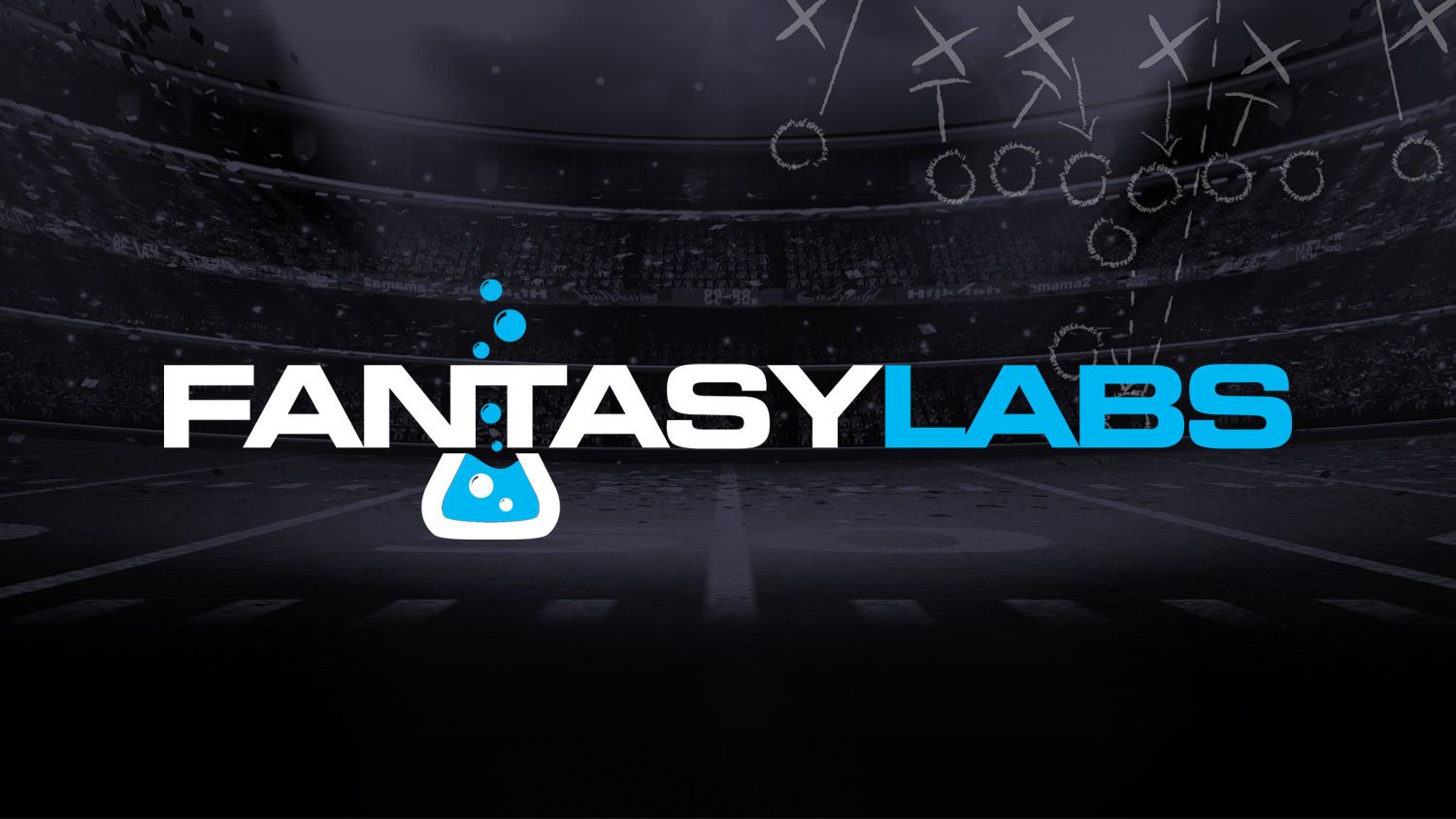As DFS players, we spend most of our time looking forward to the next slate, the next season, etc. Equally important, though, is looking back. Figuring out the thought process that leads to winning lineups is crucial. That’s what makes us better players long term.
Each week in 2022, I’ll look at the winning lineup in DraftKings Millionaire Maker Contest with an eye for how the lucky winner arrived at the lineup that took it down. We’ll focus on the key lessons of the winning lineup — and maybe even some mistakes to avoid.
While a high degree of positive variance is necessary to win a contest of this size (the standard $20 contests have over 236,000 entrants), there’s still a large amount of skill involved to get to a position to benefit from that variance.
Here’s Week 13’s winner from the $555 Millionaire Maker:

The Lineup
SamENole used a modest 10-entry portfolio to take down this one. They had two other lineups cash, using a similar core but switching out the quarterback/stack. That strategy makes sense: if you feel more confident in the ancillary pieces than the stack, building different combinations around them is a way to have a better shot at a top lineup.
As always, information on every DFS contest is available with the FantasyLabs Contest Dashboard Tool. It’s an important resource to review what worked, what didn’t, and what the top pros are doing on a weekly basis.
The Stack(s)
As someone who built a fair amount of lineups around them, I was shocked to see the ownership of AJ Brown and Jalen Hurts. Though perhaps I shouldn’t have been, as they were firmly in line with our projections. The Titans are the heaviest run-funnel defense in the league, Hurts has slate-breaking ceiling on a weekly basis, and it was a revenge game for AJ Brown.
Normally, the “revenge game” narrative isn’t important, but Brown seemed truly hurt by the Titans’ unwillingness to build around him. In this case, there just might be something there. Besides, he’s an immense talent who has a 40% air yards share. That makes him worth a shot anytime we expect a high pass rate from the Eagles.
As we’ve seen frequently with Milly Maker winners, a single stack was the right choice here. Particularly with rushing quarterbacks, it’s hard for one passer to support two truly elite scores — though in smaller field GPPs, two “very good” scores are well within reach.
SamENole brought it back with Treylon Burks, who had a relatively quiet day saved by a touchdown. Betting on Titans receivers is pretty thin given their low pass rate, but Burks has the explosive ability (and low salary) to be worth a stab.
This lineup also had a Jets stack featuring Garret Wilson and Zonovan Knight. While the correlation on the same team running back and receiver isn’t huge, the Jets have a very concentrated offense, and both players were underpriced relative to their projections. Eating the chalk on them is fine when you’re building around a low-owned stack.
Especially when you pair them with Dalvin Cook. The opposing wide receiver/running back combination shows up a lot in Milly Maker winners and continues to be an overlooked pairing. Additionally, opposing running backs are avoided when they really shouldn’t be. RB1s from opposing teams have a slightly positive correlation.
While Cook didn’t work out all that well — thanks in part to an Alexander Mattison touchdown vulture — he didn’t kill this lineup either. He has the workload to be in play on a weekly basis, but especially at low ownership.
Amon-Ra St. Brown was paired with Evan Engram from the Jaguars. St. Brown was projecting as a top wide receiver value across the industry and was a borderline must-play. Pairing him with Engram — a cheap player at a high variance position — helps offset some of the effective ownership on the Sun God.
The Chalk
Every player in this lineup with double-digit ownership was part of a correlation play. Those all likely came in at much lower combined ownership. For example, most Wilson lineups didn’t include Knight. All of SamENole’s builds had a similar theme — his Wilson lineups each had another Jet, and all of his St. Brown lineups had a Jaguar bring back at somewhat low ownership.
This is exactly how we need to think about ownership in massive-field contests like the Milly Maker (though the $555 is 5,050 people). Sometimes, chalk exists because the players are the best options at their position. However, we don’t want to blindly play into it. Thus, using lower-owned, correlated combinations is a sharp move.
The Sleepers
All of the offensive players with low ownership in this lineup were part of stacks/correlation plays. Just like with highly owned players, this is a wise strategy. Generally, players project for low ownership because they aren’t good plays. However, finding spots where they correlate with sharper plays is a solid strategy.
When building for GPPs — but especially huge ones — the thought process shouldn’t be “what are the odds that player X has an elite score?” Rather, it should be “what are the odds that players X, Y, and Z all have an elite score.” With low-owned plays, we need to find spots where the odds are higher on the second question that they are for three separate “player Xs.”.
SamENole also avoided the chalk at defense here, using the Rams at sub-10%. They didn’t post a huge score, but they didn’t need to either. The three most popular defenses were the Jets, Steelers, and Titans, all at similar price points. The Rams outscored them all.









